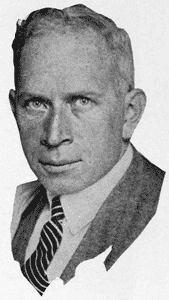Although I primarily write about politics, history and economics, one of my more unusual areas of interest is animation and comic strips. When one deals with reality so much, it’s nice to take an occasional detour into the world of fantasy. As it happens, fantasy turned this month’s CJN column into reality.
I was recently flipping through Bill Blackbeard and Martin Williams’ The Smithsonian Collection of Newspaper Comics (1977). This was one of the first comics collections I ever read and it opened a window onto classic strips – such as The Yellow Kid, The Katzenjammer Kids, Little Nemo in Slumberland and Skippy and Krazy Kat – which I’ve since written about, reviewed and enjoyed.
The book devotes two pages to Harry Hershfield. He was one of America’s first Jewish cartoonists and the first to introduce non-Jewish audiences to Yiddish language and customs.
Born in 1885 in Cedar Rapids, Iowa, to Russian immigrant parents, Hershfield showed an early aptitude for drawing and humour. He studied at the Frank Holmes School of Illustration and the Chicago Art Institute, became a teenage sports cartoonist for the Chicago Daily News and worked at the San Francisco Chronicle, New York Daily Mirror and the New York Journal.
READ: NASTY BUBBIE IS THE SUBJECT OF A DEBUT GRAPHIC NOVEL
Dubbed the “Jewish Will Rogers” (one of several in history, in fact), he was described by comics historian Ron Goulart as “a raconteur as well as a cartoonist,” who “devoted the majority of his nearly 90 years to telling funny stories, both in words and pictures.”
Hershfield created various comic strips, including Homeless Hector, According to Hoyle and Meyer the Buyer. The two that truly stood out were Desperate Desmond and Abie the Agent.
The former ran in the New York Journal from 1910 to 1914. It had a similar format to C.W. Kahles’s Hairbreadth Harry, with a cast that included a damsel in distress (Rosamund), her hero (Claude Eclair) and a dastardly villain (Desperate Desmond). There were some profound differences between Harry and Desmond. As Maurice Horn noted in The World Encyclopedia of Comics (1976), Hershfield’s strip “was named for its villain rather than its hero, and showed greater ingenuity and wit from the outset than did the more laboured Kahles work.”
Desperate Desmond also had a unique supporting character, Cannibal Chief Gomgatz. He typically spoke in gibberish, but occasionally threw in some Yiddish. Gomgatz’s popularity developed a life of its own – so much so that the Journal’s editor, Arthur Brisbane, thought that a comic strip with an all-Jewish cast would be an intriguing experiment.

This led to Abie the Agent, which ran in the Journal from 1914 to 1931, and again from 1935 to 1940.
The strip’s main protagonist, Abie Kabibble, was a car salesman – or agent – who fought for every penny he earned in sales and commissions. Supporting characters included Rosa Mine Gold Pearlman (his girlfriend, and later wife), Benny Sparksman (a competing agent) and Minsk (his friend, who was often described as “that phooey”).
As strange as it may seem, this comic strip with stereotypical Jewish characters who were loud, stingy and spoke Yiddish appealed to readers from all walks of life. A Sunday colour page was soon added. Several animated cartoons, including Iska Worreh (1917) and Abie Kabibble Outwitting His Rival (1917), were also released. The strip gradually became less ethnic and the characters more assimilated.
What led to its success? Curiosity surely played a role, along with the evolution of Jewish humour. Coulton Waugh nicely summarized Abie’s appeal in The Comics (1947): “Spanning the scale, Hershfield conceived a character based on drama, on the reaction to events of the fluctuating, many-sided human soul.… It is because Abie Kabibble is a true picture of this real, many-sided man, that he became one of the best-loved comic characters of our time.”
There you have it. A Jewish cartoonist appealed to primarily Christian newspaper readers more than a century ago with Yiddishisms. Fantasy, meet reality.






